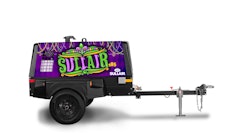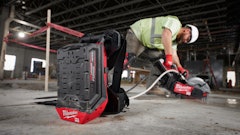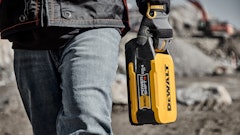
Every project has a deadline, and deadlines can be hard to keep as the days get shorter. As a rental equipment business owner, you can help contractors stay on track with rental light towers. Light towers allow crews to work after daylight hours to meet their deadlines. Here’s what you need to know about light towers to help contractors find the right solution for each unique jobsite.
How to Choose a Light Tower
There are many factors that go in to choosing the right light tower for the job. By helping contractors consider the following, you can guide them in the right direction.
Power source
There are a few different types of light towers, including internal combustion engine-powered towers (compact standard-duty, compact heavy-duty, industrial heavy-duty), battery-powered, solar-powered units and portable light tower carts.
The power source will determine how long the lighting will last before it needs to be refueled or recharged. Does the crew in question need to work an hour past dusk or all the way through the night? As the expert, you can help the contractor determine the type of power that best fits their project.
Mast height and light wattage
Next up is the tower’s mast height and the power of its lights. These two specifications are essential in determining how many towers are needed to light the space. The higher the mast, the more space it illuminates and therefore, requires higher wattage.
In most scenarios, cartlike or compact standard-duty models are best for smaller construction projects, and taller, more heavy-duty units that can stand up to the environment are a better fit for large-scale projects such as site work or bridge construction.
Depending on the tower, light towers can shine light on up to 7 acres of land. Light is measured in the amount emitted regardless of the direction, though, so one light tower will not illuminate 7 acres of a jobsite. For a football field, for example, four or more light towers are ideal to allow players enough light to see where they’re going. For more information, consult the Occupational Safety and Health Administration (OSHA) lighting standards.
Generator option
Light towers have their own generator and can offer light independently, meaning they don’t require a connection to a separate power source. This feature makes it much easier for contractors to set up a light tower wherever they need it on the jobsite. As you might know, light towers can be dual units, as well. These light towers offer contractors the added benefit of supplying a limited amount of kW of power to run hand tools and other low-wattage devices alongside lighting up the jobsite.
How to Operate a Light Tower
Just like the different types of towers, the operational aspects also differ. It’s essential for you to know the ins and outs of light towers, even the nitty gritty details about how they operate. That way, contractors can come to you for reliable advice.
To begin, determine if the light tower mast is manual or hydraulic. Manual masts are raised by winding a handle, then locking the mast into place, while hydraulic masts are automatic. Both types are made as simple as possible to ensure easy setup and teardown. For instructions specific to the brand and model, refer to the product manual.
As safe operation is always a focus for rental business, it’s important to provide instruction on proper operation with each rental. Here are the main steps for contractors to follow when setting up a light tower.
- Place it in the desired area on the jobsite.
- Make sure there are no hazards above the tower.
- Allow ample space around the tower for proper outrigger (stabilizer) setup.
- Level the tower.
- Set up the outriggers.
- Adjust and position the lights as needed.
- Raise the mast.
- Make sure all switches are off.
- Start the engine.
- Turn on the lights after the engine has run for a few minutes.
Any power-generating machine should be grounded for maximum safety, including light towers. The frame and exposed metal should be connected to proper grounding equipment. Towable light tower units are often already equipped with self-grounding equipment, but it’s an important factor to check when buying light towers for your rental business.
Reminders
One of the biggest mistakes made when operating a light tower is not giving the machine enough time to warm up or cool down. Operators can prolong the life of the machine by giving it time to run before turning on the lights and time for it to cool completely before transport back to the rental facility.
Proper maintenance is essential, as well. A contractor will likely be using the tower for a period of time, meaning they need to be aware of the upkeep involved. Provide daily, weekly and monthly maintenance instructions for the specific unit they’re renting.
Light towers can be a popular, profitable addition to your rental fleet given their versatility across industries. Construction, mining, farming, events, film and TV—you name it, they need it. By helping contractors choose the right light tower and equipping them with proper operation instructions, you can turn a one-off rental customer into a repeat customer.



























